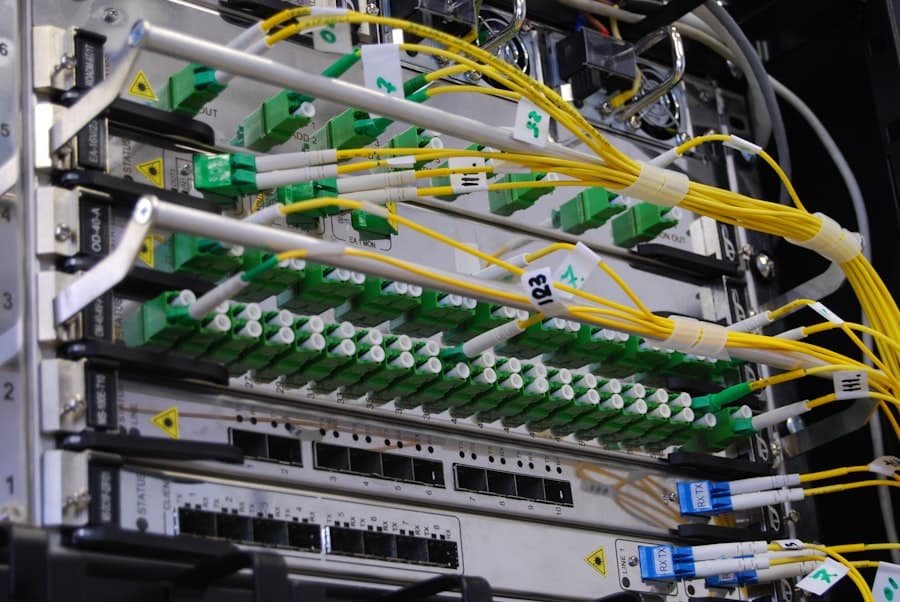The advent of 5G technology has revolutionized the telecommunications landscape, promising unprecedented speed, lower latency, and the ability to connect a vast number of devices simultaneously. However, managing such a complex and dynamic network infrastructure poses significant challenges. This is where artificial intelligence (AI) comes into play, offering innovative solutions to enhance network management processes.
AI-powered 5G network management leverages advanced algorithms and machine learning techniques to optimize performance, predict failures, and automate routine tasks, thereby ensuring that the network operates efficiently and reliably. As 5G networks continue to expand globally, the integration of AI into network management systems is becoming increasingly essential. The sheer volume of data generated by connected devices and the intricate nature of network operations necessitate a more sophisticated approach to management.
AI can analyze vast datasets in real-time, providing insights that human operators may overlook. This capability not only improves operational efficiency but also enhances the user experience by ensuring that connectivity remains stable and responsive. The synergy between AI and 5G is set to redefine how telecommunications companies manage their networks, paving the way for smarter, more resilient infrastructures.
Key Takeaways
- AI enhances 5G network management by improving efficiency and automation.
- Key benefits include optimized resource allocation and faster issue resolution.
- Challenges involve data privacy, security risks, and integration complexities.
- Machine learning plays a crucial role in predictive analytics and network optimization.
- Future innovations promise smarter, more secure, and industry-specific 5G solutions.
Benefits of AI-Powered 5G Network Management
One of the most significant advantages of AI-powered 5G network management is its ability to enhance operational efficiency. Traditional network management often relies on manual processes that can be time-consuming and prone to human error. In contrast, AI systems can automate routine tasks such as monitoring network performance, identifying anomalies, and managing traffic loads.
For instance, AI algorithms can analyze traffic patterns in real-time, dynamically adjusting bandwidth allocation to ensure optimal performance during peak usage times. This level of automation not only reduces operational costs but also allows human operators to focus on more strategic initiatives. Moreover, AI-driven analytics can lead to improved decision-making capabilities.
By harnessing machine learning models, network operators can predict potential issues before they escalate into significant problems. For example, predictive maintenance powered by AI can identify equipment that is likely to fail based on historical performance data and current operating conditions. This proactive approach minimizes downtime and enhances service reliability, which is crucial in an era where consumers expect uninterrupted connectivity.
Additionally, AI can facilitate better resource allocation by analyzing usage trends and optimizing the deployment of network resources accordingly.
Challenges and Limitations of AI-Powered 5G Network Management

Despite its numerous benefits, the implementation of AI-powered 5G network management is not without challenges. One of the primary concerns is the complexity of integrating AI systems with existing network infrastructure. Many telecommunications companies have legacy systems that may not be compatible with modern AI technologies.
Transitioning to an AI-driven model often requires significant investment in new hardware and software, as well as extensive training for personnel to effectively utilize these advanced tools. Another challenge lies in data privacy and security. The vast amounts of data collected by AI systems for analysis can pose risks if not managed properly.
Telecommunications networks are prime targets for cyberattacks, and any vulnerabilities in the AI algorithms or data handling processes could be exploited by malicious actors. Ensuring that AI systems are secure and compliant with regulations such as GDPR is paramount for maintaining customer trust and safeguarding sensitive information. Additionally, there is a risk of bias in AI algorithms if they are trained on incomplete or unrepresentative datasets, which could lead to unfair treatment of certain user groups or inefficient network management decisions.
The Role of Machine Learning in 5G Network Management
Machine learning (ML), a subset of artificial intelligence, plays a pivotal role in enhancing 5G network management capabilities. By utilizing ML algorithms, network operators can analyze historical data to identify patterns and trends that inform future decision-making processes. For instance, ML can be employed to optimize resource allocation by predicting traffic demands based on past usage patterns.
This predictive capability allows operators to allocate bandwidth more effectively, ensuring that users experience minimal latency even during peak times. Furthermore, machine learning can significantly improve fault detection and resolution processes within 5G networks. Traditional methods often rely on predefined thresholds for identifying issues, which may not account for the dynamic nature of modern networks.
In contrast, ML algorithms can learn from ongoing network behavior and adapt their detection mechanisms accordingly. For example, if a particular node in the network begins to exhibit unusual behavior indicative of a potential failure, an ML model can flag this anomaly for further investigation before it leads to service disruption. This adaptive approach not only enhances the reliability of the network but also reduces the time required for troubleshooting and repairs.
Implementing AI-Powered 5G Network Management in Different Industries
The implementation of AI-powered 5G network management extends beyond telecommunications providers; it has far-reaching implications across various industries. In healthcare, for instance, the integration of AI with 5G technology can facilitate remote patient monitoring and telemedicine services. Real-time data analysis powered by AI can help healthcare providers make informed decisions quickly, improving patient outcomes while reducing the burden on healthcare facilities.
In the manufacturing sector, AI-driven 5G networks enable smart factories where machines communicate seamlessly with each other and with human operators. Predictive maintenance powered by AI can minimize downtime by anticipating equipment failures before they occur. Additionally, real-time analytics can optimize production processes by adjusting workflows based on current demand and operational efficiency metrics.
This level of automation not only enhances productivity but also fosters innovation by allowing manufacturers to respond swiftly to market changes.
Security and Privacy Concerns in AI-Powered 5G Network Management

As with any technology that handles sensitive data, security and privacy concerns are paramount in the realm of AI-powered 5G network management. The integration of AI systems into telecommunications networks raises questions about data protection and compliance with privacy regulations. The vast amounts of data collected for analysis must be safeguarded against unauthorized access and breaches.
Telecommunications companies must implement robust security measures to protect both their networks and their customers’ data. Moreover, there is a growing concern regarding the ethical implications of using AI in decision-making processes within network management.
Ensuring transparency in how these algorithms operate is crucial for maintaining public trust. Companies must establish clear guidelines for ethical AI use while also investing in technologies that enhance data security and privacy.
Future Developments and Innovations in AI-Powered 5G Network Management
The future of AI-powered 5G network management is poised for significant advancements as technology continues to evolve. One promising area is the development of more sophisticated machine learning models that can process data at unprecedented speeds and accuracy levels. As quantum computing becomes more accessible, it could revolutionize how data is analyzed in real-time, enabling even more complex predictive analytics capabilities.
Additionally, the rise of edge computing will play a crucial role in enhancing AI-powered 5G network management. By processing data closer to where it is generated rather than relying solely on centralized cloud servers, edge computing can reduce latency and improve response times for critical applications. This shift will enable more efficient use of network resources while also enhancing security by minimizing the amount of sensitive data transmitted over long distances.
The Impact of AI-Powered 5G Network Management on the Future of Telecommunications
The integration of artificial intelligence into 5G network management represents a transformative shift in how telecommunications companies operate. By harnessing the power of AI and machine learning, these companies can optimize their networks for efficiency, reliability, and user satisfaction. While challenges such as security concerns and integration complexities remain, the potential benefits far outweigh these obstacles.
As industries across the board begin to adopt AI-powered 5G solutions, we are likely to witness a new era of connectivity that enhances not only telecommunications but also healthcare, manufacturing, transportation, and beyond. The future promises innovations that will redefine our relationship with technology and connectivity itself, making it imperative for stakeholders to embrace these advancements responsibly and ethically.
In exploring the advancements in AI-powered 5G network management, it’s interesting to consider how emerging technologies are shaping various sectors. For instance, the article on the top trends on YouTube in 2023 highlights the increasing influence of digital content and technology on consumer behavior, which could have implications for network management as demand for high-quality streaming rises. You can read more about these trends in the article

